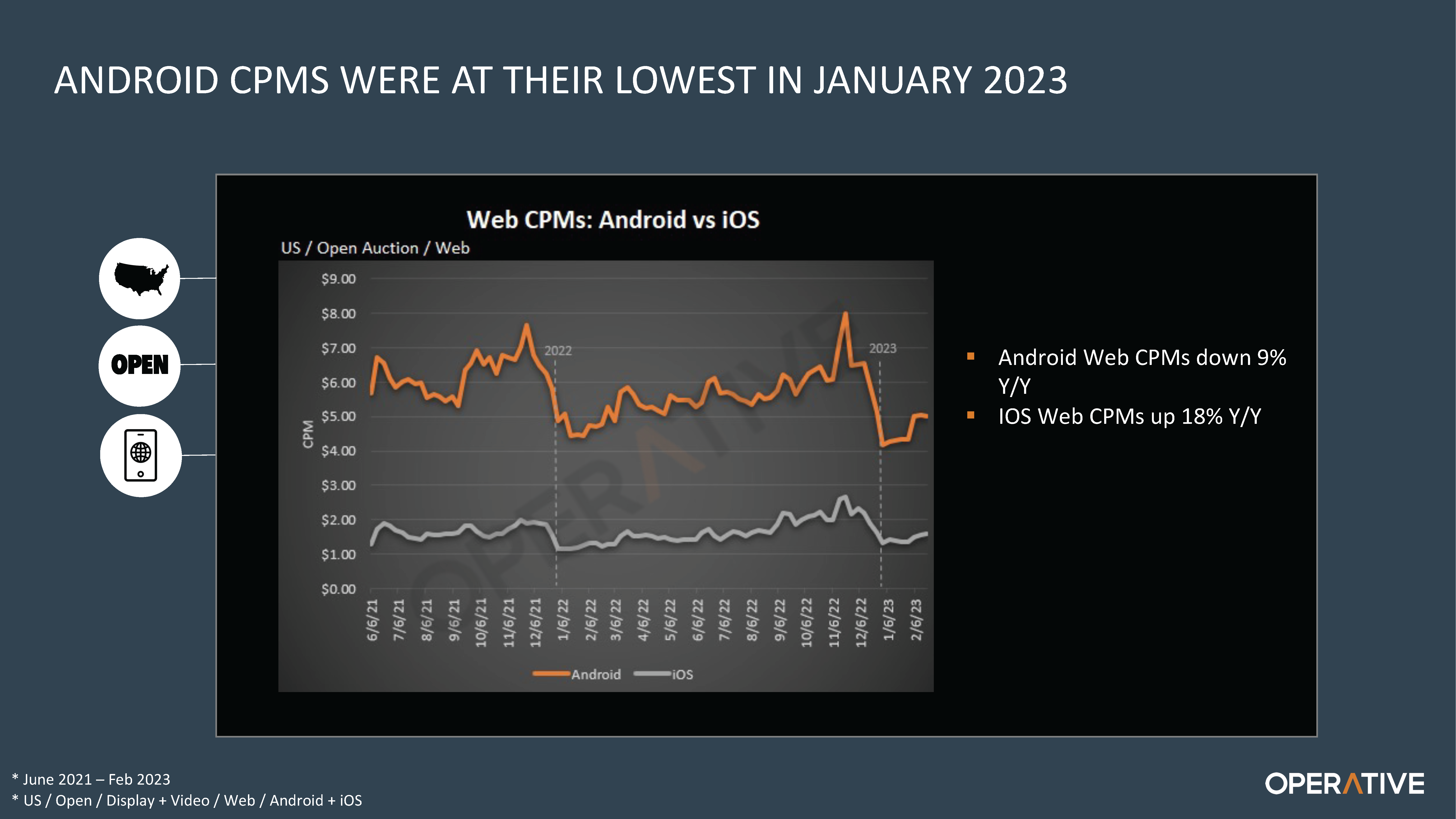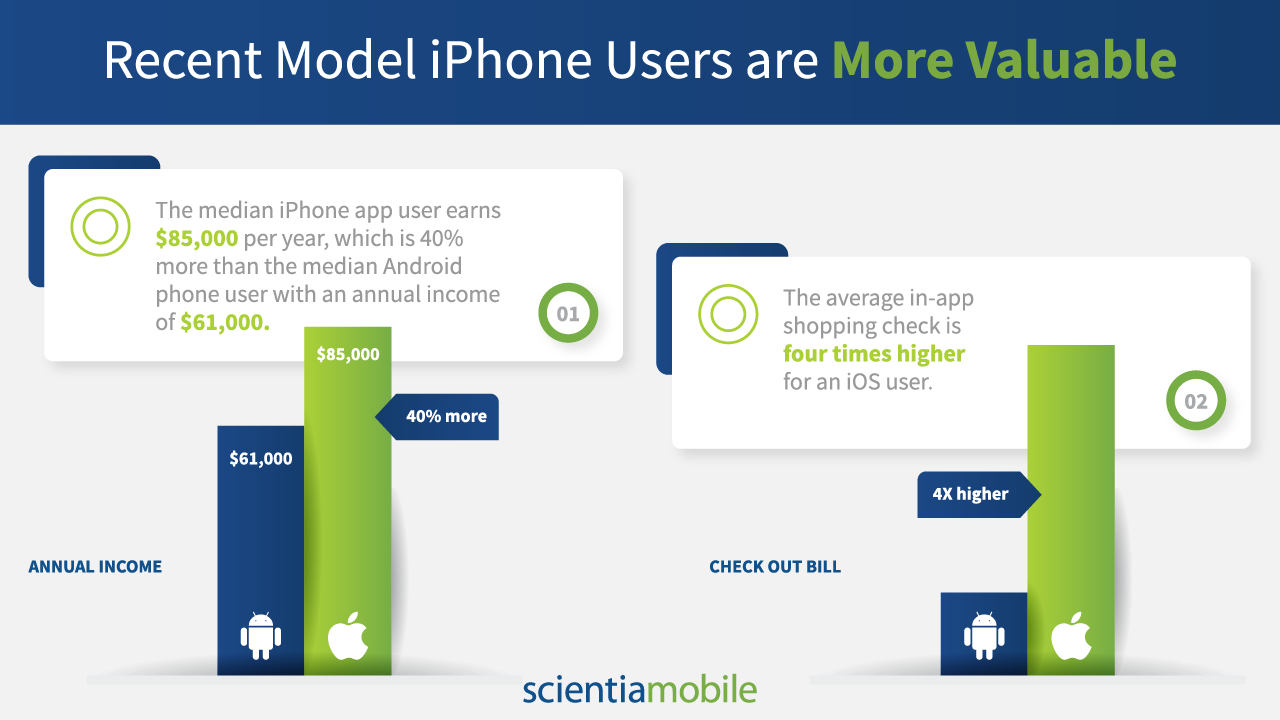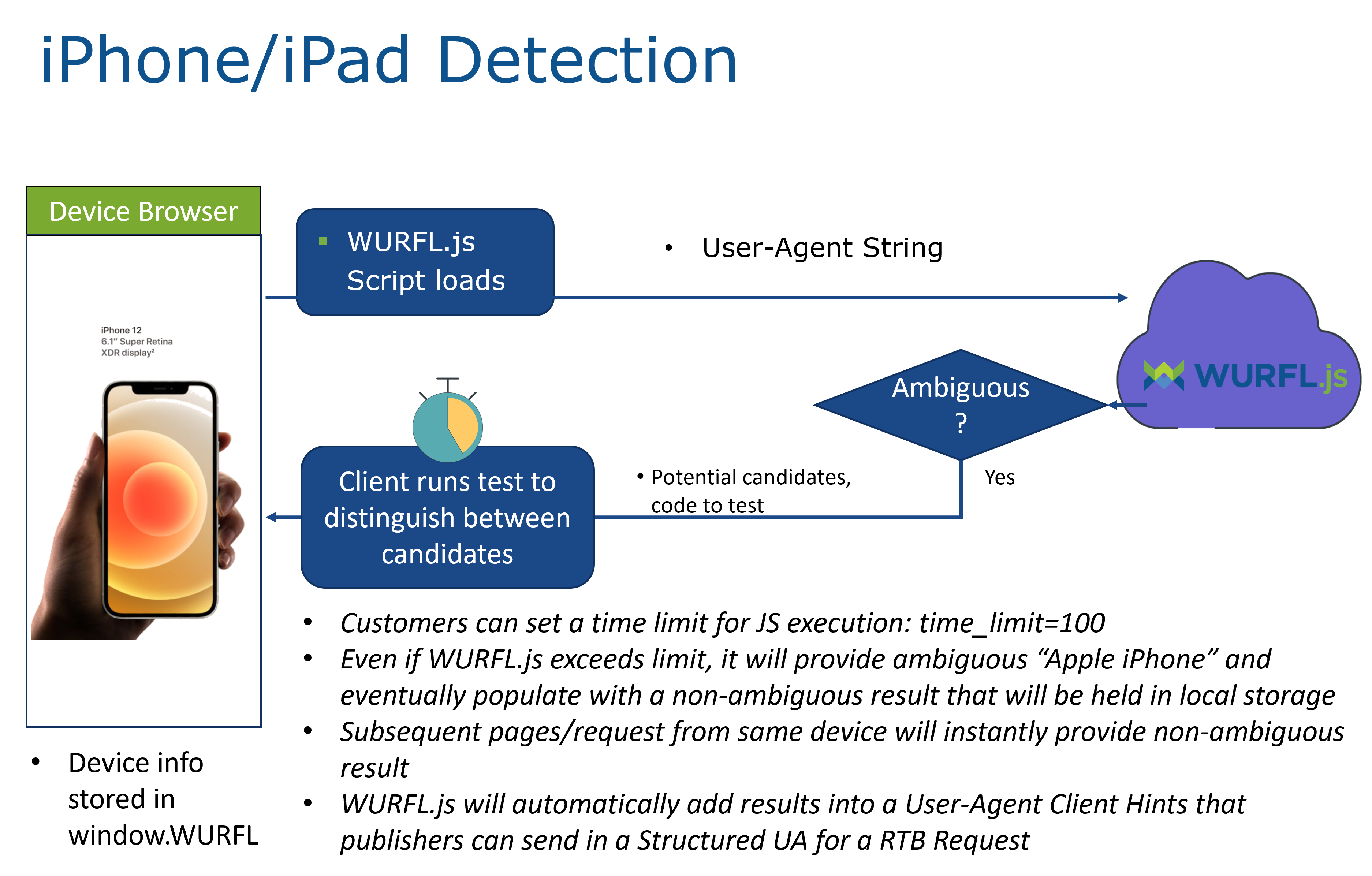
by Ken Jones, VP of Solutions and Business Development
iPhone CPM lower than Android
Recently I sat in on a great webinar by Operative. They were going through Operative’s STAQ Benchmarking Data. One section had a slide that compared Android versus iOS CPM. Over the time period from 2021 to 2023, the price fluctuated. But what caught my eye was that iOS display advertising pricing (CPM – cost per thousand impressions) is only one third of Android. On this slide Android CPM is ~$6 CPM vs. $2 for iPhones. Why such a large disparity? And what can can be done to counteract and increase the CPM for iOS.

iOS 14 Privacy Changes Depress CPM
The introduction of Apple’s iOS 14 allowed users to opt out of tracking on all their devices, and 96% of them chose to do so. And without the ability to track, many advertisers have decided that it is not worth their while to bid or pay for an iOS audience. Therefore, the price for an iOS audience has dropped dramatically. Advertisers have decided to stick with more easily identified and tracked Android users.
However, this drop in price for iOS CPM goes against many well established truths about iPhone users.
Intrinsic Value of iPhone Users
According to recent statistics, iPhone app users earn more than Android phone users. One possible explanation for this could be differences in demographics, consumer habits, and spending patterns between iPhone and Android phone users.
Demographically, iPhone users tend to have higher incomes and education levels compared to Android users. Additionally, iPhone users are more likely to be employed in high-paying industries such as finance, tech, and healthcare. On the other hand, Android users are more likely to work in lower-paying industries such as retail and hospitality.
Consumer habits and spending patterns may also contribute to the income disparity. iPhone users tend to spend more on their devices and related services, such as apps and cloud storage, compared to Android users. They also tend to use their phones more frequently for work and productivity-related tasks, which may contribute to their higher earnings. In contrast, Android users may spend less on their phones and use them more for entertainment and leisure activities, which may not directly contribute to their income.

Not All iPhone Users are the Same, So Differentiate Between Them
Apple makes it technographically difficult to distinguish between different models of iPhones. And as we know, an early-adopter user of the latest iPhone 14 Pro is very different from a laggard iPhone 7 user. In fact, a significant portion of iPhone users fit the classical model of an early tech adopter. They buy the latest and greatest from Apple tech from Apple whether or not they need it. They love embracing the new tech that Apple serves up.
But this early adopter is very different from someone who is still using an iPhone 7. This laggard had probably inherited the phone or bought it second hand.
Wouldn’t it be great to distinguish between iPhone user and target the users by their models or model capabilities? The good news is that ScientiaMobile’s WURFL.js can help.
Cloud-based WURFL.js is More Accurate and easier to Maintain
WURFL.js, developed by ScientiaMobile, is a powerful cloud-based device detection solution that ensures advertisers can always identify the various models and capabilities of Apple iPhones. One of the key advantages of the solution is that it is always up to date, meaning that advertisers can stay ahead of the curve and target users with the latest iPhones.
WURFL.js recognizes ambiguous user-agent strings by running additional tests to distinguish between different models of iPhones. This information is then cached for subsequent page requests from the same device. With WURFL.js, advertisers can address the issue of the intrinsic value of iPhone users, allowing them to differentiate between different models and target specific audiences with precision and accuracy.

Stay With Your Latency Budget
WURFL.js, the cloud-based device detection solution developed by ScientiaMobile, is designed to conform to the latency budgets set by publishers or SSPs. The device detection JavaScript has a fast loading time and quick response time to requests, thanks to the cloud servers positioned around the world. Moreover, WURFL.js auto-scales to accommodate traffic, allowing publishers and SSPs to set a limit for JavaScript execution time. For example, a time_limit of 100 could be set as the latency floor. If a test exceeds this limit for an iPhone, an ambiguous “Apple iPhone” response will be returned, and the ad will be served based on this information. However, the test will provide a non-ambiguous response, such as “Apple iPhone 14 Pro,” which will be cached (in window.WURFL) for subsequent ad requests. By ensuring quick response times and the ability to cache device model data, WURFL.js helps advertisers differentiate between different models and target specific audiences with greater precision and accuracy.
Better Device Information Improves Advertising
Utilizing better device information to enhance your advertising strategy. By incorporating data related to your audience’s devices, internet usage habits, and location, you can create personalized and effective ads that capture their attention. This targeted approach not only increases advertising effectiveness, but also allows you to charge a higher price for your ads.
With better device information, you can differentiate between various iPhone models and their capabilities, allowing you to target specific audiences with precision and accuracy. Additionally, by understanding the intrinsic value of iPhone users, you can tailor your ads to their higher income, spending habits, and demographic patterns. This level of personalization can lead to higher conversion rates for your business and improve ROI over time. Don’t let the drop in iOS CPM hinder your advertising success. Embrace a more targeted approach to increase your revenue opportunity.








